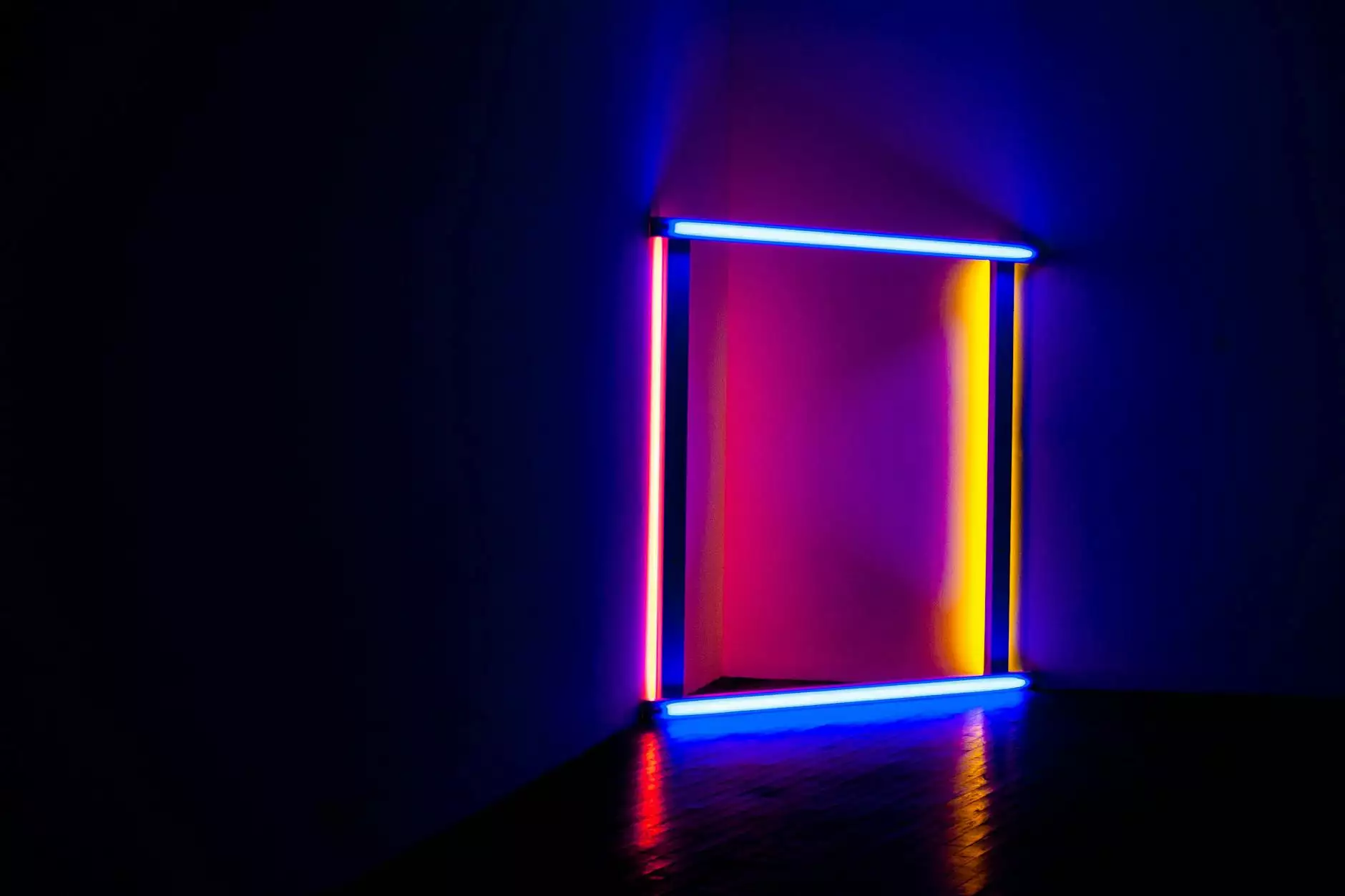Understanding the Artistry of the Contemporary Light Artist

Contemporary light artists harness the ephemeral nature of light to create breathtaking works that transcend traditional boundaries of artistic expression. As a medium that breathes life and movement into static forms, light has become a pivotal element in contemporary art, reshaping viewers' perceptions and experiences. This article delves deeply into the realm of contemporary light art, exploring its evolution, significance, and the transformative power it holds within art galleries globally.
The Evolution of Light as a Medium in Art
The journey of light as a medium in art can be traced back to the groundbreaking works of early pioneers. From the luminous canvases of the Impressionists to the elaborate installations of modern artists, light has been continuously redefined in artistic contexts. Contemporary light artists have pushed these boundaries even further, integrating technology and innovative practices to forge a new era of art.
Historical Context: The Light Movement
In the late 19th century, artists such as Claude Monet began to explore light as a critical component of their paintings, focusing on changing light conditions and how they affected color perception. This foundation paved the way for future explorations into the essence of light. Artists like Dan Flavin and James Turrell emerged in the 20th century, utilizing artificial light in their works to challenge viewers' sensory experiences and spatial understanding.
The Rise of Technology in Contemporary Light Art
Today, technology plays a crucial role in the works of contemporary light artists. Advancements like LED technology, projection mapping, and interactive installations have expanded the possibilities of how light can be manipulated and infused into art. Artists are now able to create immersive experiences that actively engage the audience, encouraging deeper contemplation and interaction.
The Significance of Light in Contemporary Art Galleries
Art galleries serve as sanctuaries where artistic expression thrives, and the incorporation of light art into these spaces has redefined the visitor experience. Light art installations captivate audiences, inviting them to ponder the relationship between space, light, and perception.
Transforming Spaces through Light
Light installations can dramatically transform an art gallery. By altering the atmosphere, light can evoke various moods and feelings, ranging from tranquility to exhilaration. Contemporary light artists often create site-specific works that respond to the architecture and layout of the gallery, making the space itself a part of the artwork. This interplay enhances the viewer's journey, as they navigate through and immerse themselves in the luminous environment.
Encouraging Audience Interaction
One of the incredible aspects of contemporary light art is its ability to foster interaction. Many contemporary light artists provide immersive environments where audiences can engage with the artwork through movement, touch, or even sound. This interactivity transforms viewers from passive observers into active participants, enriching their experience and personal connection to the art.
The Impact of Contemporary Light Art on Culture
The influence of contemporary light artists extends beyond the gallery walls and permeates cultural conversations. As our society increasingly embraces technology and digital mediums, contemporary light art reflects this evolution, prompting discussions about our relationship with light and technology in everyday life.
Bridging the Digital Divide
In a world filled with screens and digital interfaces, contemporary light artists have the unique ability to bridge the gap between the physical and digital realms. Their works often explore themes of perception and reality, reflecting societal changes that merge technology with tactile experiences. Audiences are invited to contemplate how light—once merely a physical phenomenon—now serves as a metaphor for the interplay between the digital and the tangible.
Encouraging Social Discourse
Contemporary light artists often engage with social and political issues through their work, using light as a medium to communicate messages and provoke thought. By addressing topics such as environmental concerns, identity, and community, these artists contribute to broader dialogues, stimulating critical thinking and awareness among viewers.
Spotlight on Notable Contemporary Light Artists
As we delve further into the world of contemporary light art, it's essential to acknowledge a few standout artists whose contributions have significantly shaped this field.
James Turrell
James Turrell is perhaps the most renowned contemporary light artist, known for his breathtaking installations that manipulate light and space. His work invites viewers to experience light as a physical presence, often blurring the boundaries between art and architecture. Turrell's iconic work, the Roden Crater, is a masterpiece that uses natural light to create a profound, transformative experience.
Dan Flavin
Another seminal figure in the world of light art is Dan Flavin, who utilized commercially available fluorescent light fixtures to compose minimalist installations. Flavin's work emphasizes the relationship between light, color, and environment, creating immersive experiences that challenge perceptions of space and form.
Olafur Eliasson
Olafur Eliasson is known for his innovative use of light in nature-based installations. His projects often incorporate elements such as water, fog, and sunlight, encouraging viewers to engage with the environment and explore their surroundings. Eliasson's works are both artistic and ecological, prompting conversations about climate change and our responsibility towards nature.
The Future of Contemporary Light Art
As the world moves forward, the future of contemporary light art is poised for exciting developments. Artists are likely to continue pushing boundaries, exploring new technologies, and expanding the definition of what light art can entail. With growing interest in immersive experiences and interactive installations, light art will continue to captivate audiences in galleries and public spaces alike.
Emerging Technologies and Innovations
The integration of augmented reality (AR) and virtual reality (VR) technologies into light art stands to revolutionize the medium. By enabling viewers to experience art in entirely new dimensions, these technologies can amplify the emotive power of light, creating more profound connections between the art and the audience.
Global Reach and Cultural Exchange
The globalization of contemporary art has fostered increased collaboration among artists from diverse cultural backgrounds. This exchange of ideas and techniques enriches the discourse surrounding light art, promoting a vibrant and shared understanding of light across cultures.
Conclusion: Celebrating the Contemporary Light Artist
In conclusion, the role of the contemporary light artist is more significant than ever. Through their innovative approaches to light and space, they challenge us to see the world differently and engage with art in new and meaningful ways. Whether through immersive installations or thought-provoking exhibitions, contemporary light artists continue to inspire and elevate our understanding of art and its impact on culture.
As we celebrate the brilliance of these artists, it's essential to support art galleries that showcase their works, ensuring that the luminous conversations surrounding contemporary light art continue to thrive for generations to come.









